
threatened
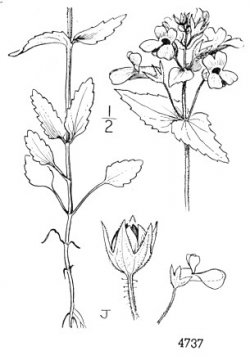
Illustration from Abrams (1951).
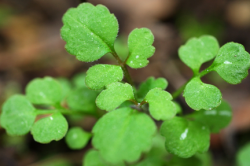
Photo taken in the Scott Creek watershed © 2006 Dylan Neubauer.
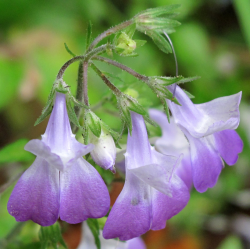
Photo taken in the Scott Creek watershed © 2011 Dylan Neubauer.
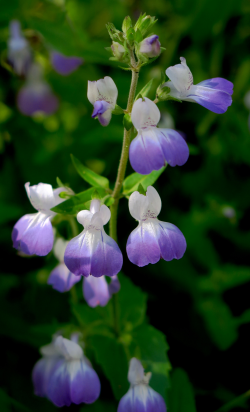
Photo taken in the Waddell Creek watershed in Big Basin Redwoods State Park © 2016 Dylan Neubauer.
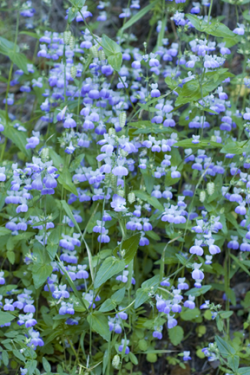
Photo taken in the Scott Creek watershed © 2006 Dylan Neubauer.
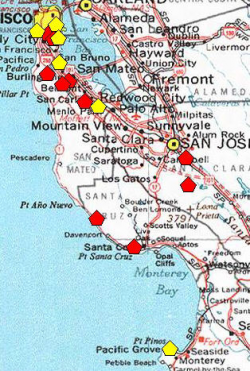
A red polygon indicates an extant occurrence; yellow indicates the occurrence has been extirpated



This fact sheet was prepared by Dylan M. Neubauer under award NA04N0S4200074 from the National Oceanic and Atmospheric Administration (NOAA), U.S. Department of Commerce (DOC). The statements, findings, conclusions, and recommendations are those of the authors and do not necessarily reflect the views of the NOAA or the DOC.
© Copyright 2006, Elkhorn Slough Coastal Training Program
Last updated: Mar 23, 2016 12:48
Common Names - San Francisco collinsia
Family - Plantaginaceae (Plantain Family)
State Status - none
Federal Status - none
Habitat
Shaded herb-rich understory of coast live oak (Quercus agrifolia var. agrifolia) woodland or mixed forest in sheltered, generally mesic, canyon bottom settings; in Santa Clara County occurs on the edge of serpentine chaparral; 30–250 m. This species appears to be distubance-dependent and favors open areas at the toe of steep slopes where soil movement has recently occurred.
Key Characteristics
Delicate annual herb to 6 dm tall, loosely branched; leaves opposite, middle and distal clasping, lanceolate-deltate, generally coarsely serrate; inflorescence glandular-clammy, flowers loosely whorled (vs. C. heterophylla, where they are densely whorled); proximal pedicels 1-2 per node, >> calyx (vs. C. heterophylla, where they are < calyx), distal pedicels 3+ per node, ± crowded, ± = calyx; calyx lobe tips acute; corolla 12–18 mm long, throat longer than wide, pouch rounded, not prominent, upper lip whitish, not or faintly dotted and lined, lower lip lavender to blue-purple, lateral lobes obovate, notched, lowest lobe sometimes sparsely hairy; upper filaments hairy, basal spur 0-0.5 mm; seed 8+, ± plump.
Flowering Period
March to May
Reference Populations
Anderson Lake County Park (Santa Clara County); Edgewood County Park (San Mateo County); Big Basin Redwoods State Park (Santa Cruz County).
Global Distribution
Endemic to central California in Monterey, San Francisco, San Mateo, Santa Clara, and Santa Cruz counties.
Conservation
The historical location near Pacific Grove is presumed extirpated. Several historical occurrences on the San Francisco Peninsula have been extirpated, but one occurrence on Bayview Hill remains (Wood 1996, Yerba Buena Chapter 2014). Large areas of suitable habitat have not been surveyed, and because it grows on steeper slopes, it is to be expected in rural residential settings.
Of four documented Santa Clara County occurrences, only the Anderson Dam population (discovered in 2009), which grows on serpentine-derived soil, is presumed extant. Recent preliminary genetic work indicates that it is the coastal populations, which do not grow on serpentine-derived soil, that appear divergent—while there is no signal of serpentine population divergence (Hillman, pers. comm.). The Anderson Dam population is threatened with inundation and erosion on the reservoir shoreline. Seedbanking for this population has been conducted since 2010 (Hillman, pers. comm. 2015).
Several populations are extant in the Scott Creek watershed. Two of these populations are growing in close proximity to C. heterophylla var. heterophylla (West 2015). As of 2016, a small population (~500 plants) is still extant in Big Basin Redwoods State Park where the population is being weeded by volunteers.
References
Abrams, L. 1951. Illustrated Flora of the Pacific States, Vol. 3. Stanford University Press, Palo Alto, CA.
CNPS, Rare Plant Program. 2011. Collinsia multicolor, in Inventory of Rare and Endangered Plants (online edition, v8-02). California Native Plant Society, Sacramento, CA. http://www.rareplants.cnps.org/detail/499.html [accessed 5 February 2015].
Hillman, J. Personal communication [2 February 2016].
Park, M. S. and E. C. Neese. 2013. Collinsia multicolor, in Jepson Flora Project (eds.). Jepson eFlora. http://ucjeps.berkeley.edu/cgi-bin/get_IJM.pl?tid=19997 [accessed 5 February 2015].
West, J. A. 2015. Traversing Swanton Road. http://arboretum.ucsc.edu/pdfs/TraversingSwanton.pdf [accessed 5 February 2015].
Wood, M. 1996. Focus on Rarities: San Francisco collinsia, Collinsia multicolor. California Native Plant Society, Yerba Buena Chapter, San Francisco, CA. http://www.cnps-yerbabuena.org/experience/focus_on_rarities.html#pageTop [accessed 15 February 2015].
Yerba Buena Chapter, CNPS. 2015. Rare plants of San Francisco County. Published by the Rare Plant Committee of the Yerba Buena Chapter and the San Francisco Department of the Environment. http://www.sfenvironment.org/sites/default/files/fliers/files/sfe_bd_sf_rare_plant_summary.pdf [accessed 9 February 2015].
